Autonomy: the struggle for freedom versus the security of what is known, the intrinsic human desire to exercise self-agency against the backdrop of overbearing authority. LitSoc analyses the hidden subtexts and outright juxtapositions that form the expression of autonomy through our mini-studies of the characters caught between such conflicting ideals. If these pique your interest, delve deeper with us at our monthly book clubs, or chat with us about all things bookish on our Discord. Find us on Instagram @utslitsoc or UTS Literary Society on Facebook.
UTS Drawing Circle provides a judgement-free space for students to have fun, build relationships, and develop their skills with others passionate about art. Social events involve everything from weekly art challenges, to workshops and collaborations with other societies, to collective, frenzied doodling.
Students of all skill levels are encouraged to join us in Pictionary, animation, art style analysis, or even just discussing the manifestations of our inner turmoil and stresses through art. However you choose to express yourself artistically, you’re welcome to partake in the chaos and joy that is UTS Drawing Circle.
Together, LitSoc and Drawing Circle have breathed life into characters that we hope can inspire you to find your voice, carve your path, and champion your independence.
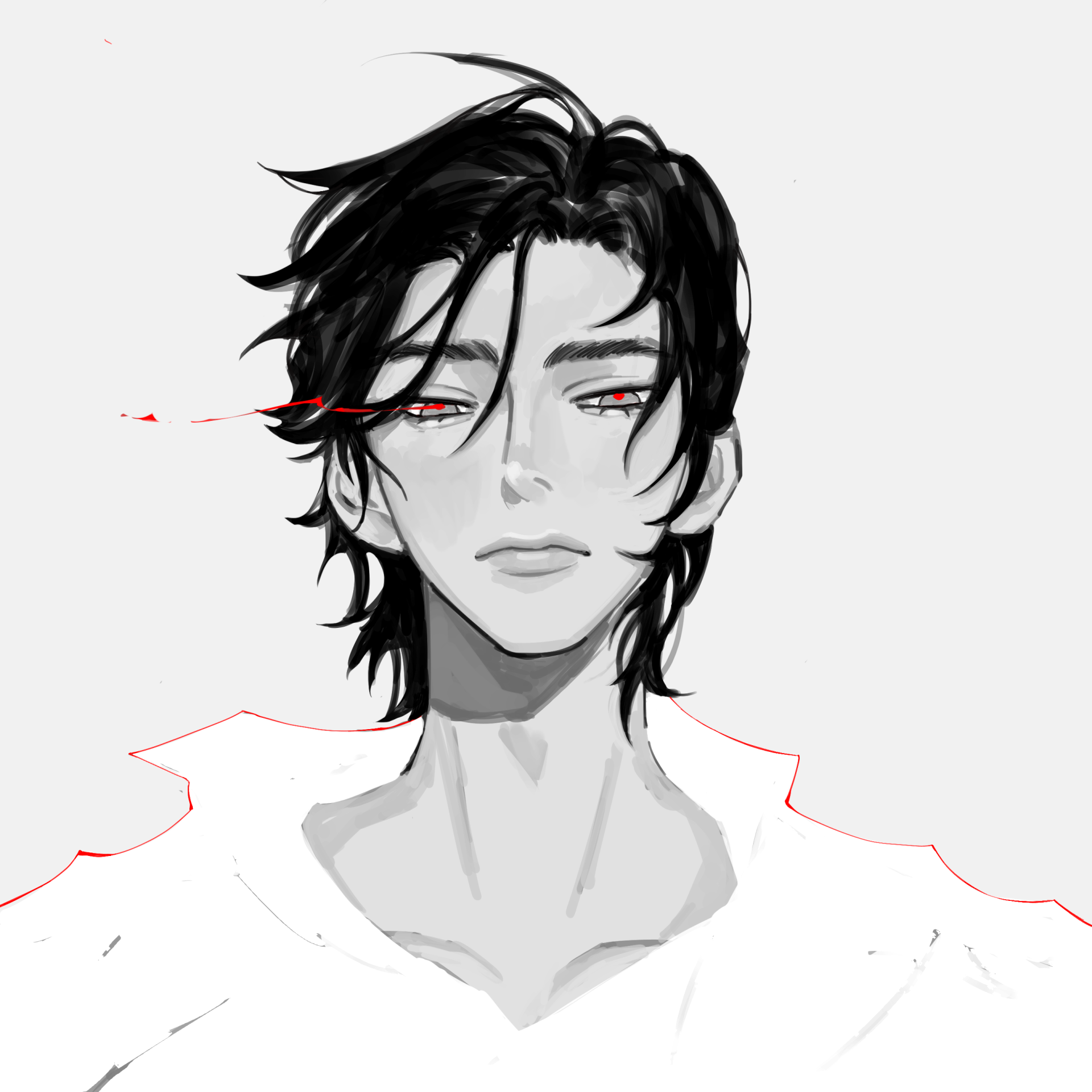
Paul Atreides
illustrated by Christy Kun
#Paul Atreides from ‘Dune’ by Frank Herbert (Chilton Books)
Zara Meier: President
CW: Death, war
“Prophets have a way of dying by violence.”
Paul Atreides is only 15 when he is thrust into a world of politics and power, all of which are out of his control. Although he sets off with good intentions, his limited agency means he is forced to make decisions with unintended consequences. Paul serves as a warning to those who put their faith in charismatic leaders, warning that even those with the purest intent can be problematic. His prescience means he can often see far into his future, yet the inevitability of his fate leaves him grappling with the ultimate question: how do you know if the decision you are making is the right one? A prophet who is inextricably bound by his purpose showcases that even an all-knowing man is nothing more than what his followers make him. If they decide to use his legacy for wrongdoings, they are within their right to do so. Paul is no hero, he is just a symbol — whatever the people need him to be — but most of all, he is human, something that is often forgotten by many along the way.
#Inej Ghafa from Six of Crows Duology by Leigh Bardugo (Henry Holt and Co.)
Liam Maher: Treasurer
CW: Addiction, child trafficking, violence, slavery, gambling, death
“She was not a lynx or a spider or even the Wraith. She was Inej Ghafa, and her future was waiting above.”
Captured, sold, and exported to a pleasure house at 14, Inej Ghafa was stripped of her family, country, and purpose; and yet Inej remained courageous in her plight to better her circumstances with a burning passion to spark a movement, putting an end to the destruction of using girls for pleasure. Inej is a vivid expression of the perseverance of individuality when robbed of autonomy; rather than seeking revenge, she pursues change. After being sold, Inej is purchased by a gang-boss and works as an indentured servant to fuel and carry out high-stake crimes, becoming a close ally to the leader, Kaz. Her intense and unwavering loyalty to her friends challenges her beliefs as a faith-guided person forced to survive through the darkness of gang violence. Ultimately, Inej battles with her abhorrent past to fuel her success as the Wraith, and demonstrates the struggle of being unnoticed, owned, and underestimated — her dynamic experiences motivate her to fight for her own autonomy.
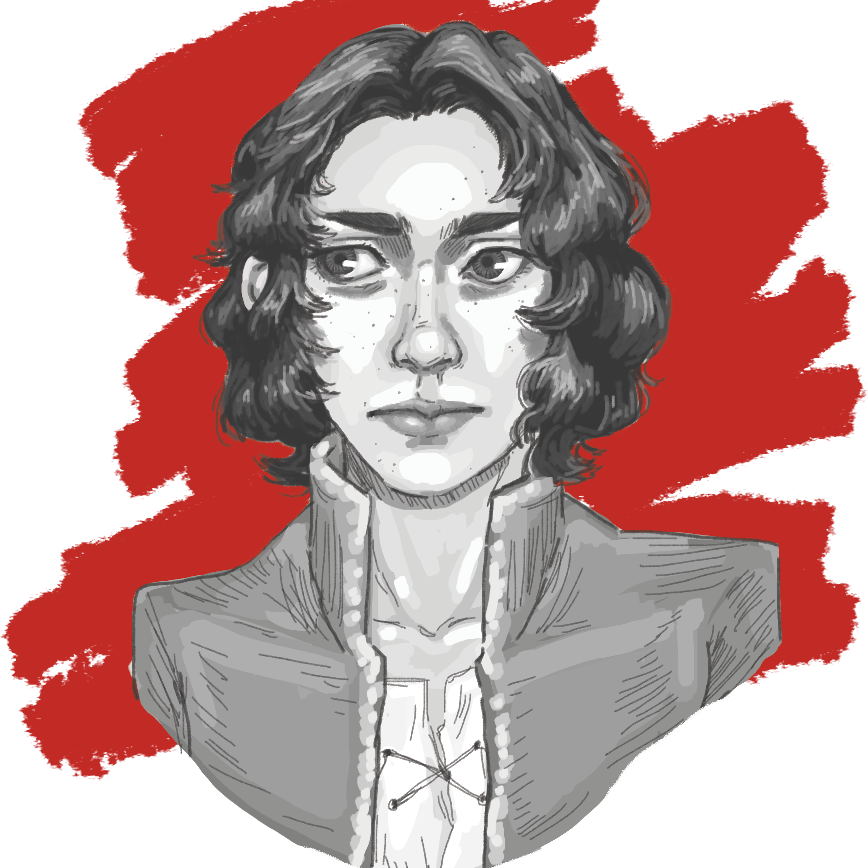
Vasya Petrovna
illustrated by Sethana Meas
#Vasya Petrovna from 'The Winternight Trilogy' by Katherine Arden (Del Rey Books)
Talia Moodley: Publications Director
CW: Sexual violence, r*pe, animal death, war, death, torture, violence
“I have been running through the dark, trying to save all who have need of me. I have done good and I have done evil, but I am neither. I am only myself.”
Vasya Petrovna is a woman and a witch in 14th-century Russia, where men want the former at home bearing children and the latter dead. She grows from a reckless and unruly child into a fierce guardian (albeit, still an unruly one) of the precarious peace between Orthodoxy and paganism. This road is not easy, and Vasya learns through trial and bitter error how to carve a place for herself in a world that would rather delegate it to her. Despite the trouble this lands her in (the kind that sets Moscow aflame and raises the dead) Vasya fights for her freedom. Sometimes the price of this is disappointing those closest to her, who would rather see her settle down into marriage, and Vasya has to make sense of her own ambition, doubt, and desire when all three are considered unnatural. But, if there’s one thing we learn, it’s that the denial of choice is what is truly unnatural.
#Fang Runin from ‘The Poppy War’ by R.F. Kuang (HarperCollins)
Chantelle Cortez Maglalang: Communications Manager
CW: Violence, genocide, r*pe, death, drug use, torture, gore, blood, drug addiction, sexual violence, racism, xenophobia, self-harm
“I have become something wonderful, she thought. I have become something terrible.”
There is utter devastation that resounds with Rin’s character. Her story gripes with more than just gaining power but the right to be consumed by burning rage. Rin fights tooth and nail, baring soul and searing self. She is a true example of the continuous battle in taking ownership of the blood and dirt of one’s origins. Her story lays the groundwork for questioning control and agency within war, internally and externally. It is not about the simple binaries of good and evil but the painful tendrils that lay in between — the harsh and bitter paradoxes, and the tumultuous events that played out long before her birth. She can be callous but at the same time you cannot help but feel this constant ache for her, despite insanity and extremity.
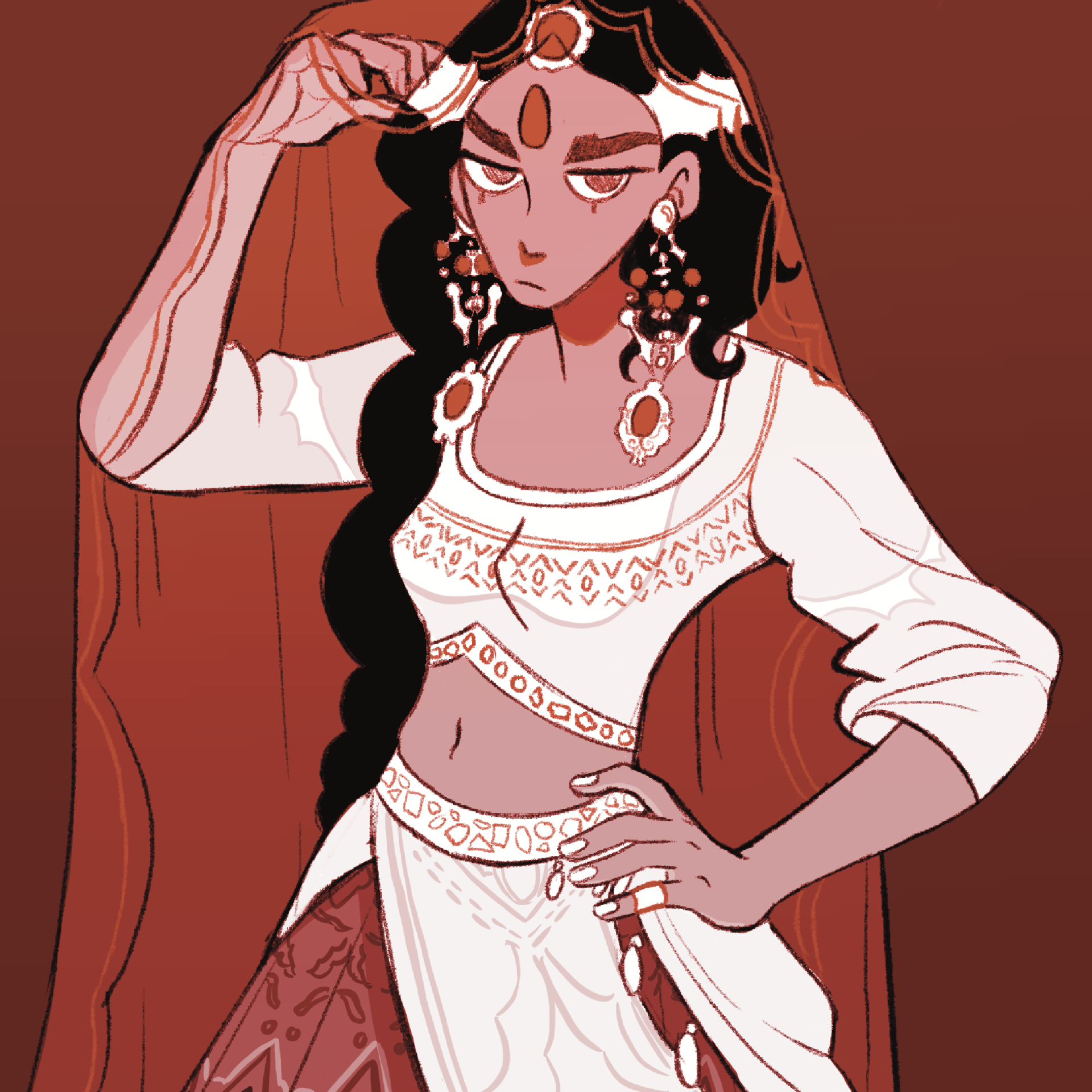
Shahrzad al-Khayzuran
illustrated by Serena Hor
#Shahrzad al-Khayzuran from ‘The Wrath and the Dawn’ by Renée Adleih (Putnam)
Regina Azwar: Graphic Designer
CW: Animal death/cruelty, death, suicide
“If I’m a plague, then you should keep your distance, unless you plan on being destroyed.”
The Wrath and the Dawn is an angsty, romantic tale inspired by One Thousand and One Nights. The story follows 16-year-old Shahrzad, seeking revenge for the death of her best friend after she was a bride to the Caliph, Khalid. Khalid, the mysterious and ruthless boy king, takes new brides every night to be executed the following dawn, but something else lies beneath his heart. Shahrzad is passionate, strong minded, and silver-tongued with a fiery temper. Her reckless demeanor and fierce loyalty, combined with her smarts, charm, and beauty, allows her to entrance Khalid to uncover the truth. She will stop at nothing to avenge the death of her friend. However, she comes to learn that Khalid is not what he seems and may not be the villainous murderer that he is tainted to be. The Wrath and the Dawn is a dazzling tale that dances between love, betrayal, and mystery, narrated against the backdrop of a beautiful and vivid world for Renée Adleih’s complicated and beautiful characters.
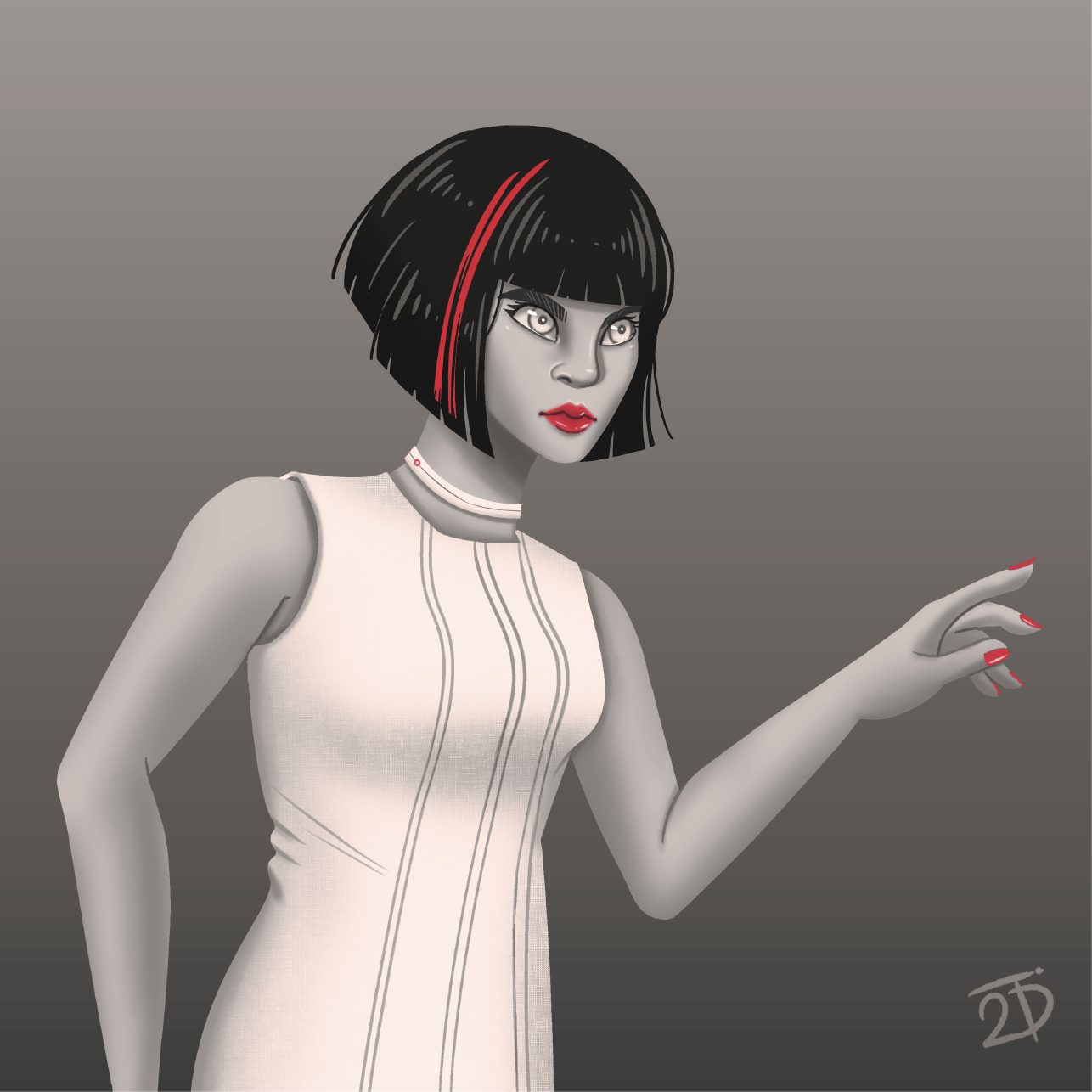
Sonmi-451
illustrated by Liana Duong
#Somni-451 from 'Cloud Atlas' by David Mitchell (Sceptre)
Katie Hopkins: Publications Coordinator
CW: Death, violence, suicide, racism
“We are only what we know, and I wished to be so much more than I was, sorely.”
Sonmi-451 is what they call a ‘fabricant’, an android created for the purpose of manual labour, one of thousands. However, she is able to break free of the her programming that was preventing her from learning autonomously and developing a unique personality. She discovers that every fabricant has a conscience and learning capabilities, suppressed by their food which she calls ‘soap’, perhaps for its ability to cleanse any learning from their brains. The story is fundamentally about Sonmi-451 discovering her autonomy and learning to use it to assert her beliefs against a government preaching conformity. She escapes and finds herself in the middle of a plan for a fabricant rebellion, with herself as the figurehead, fighting for the autonomy of all fabricants. And yet, at the end it is revealed that those who had been helping her escape and pushing her to extremes to assert her beliefs were set up by the government to create a public fear of fabricants. Her autonomy, in short, was only ever an illusion.
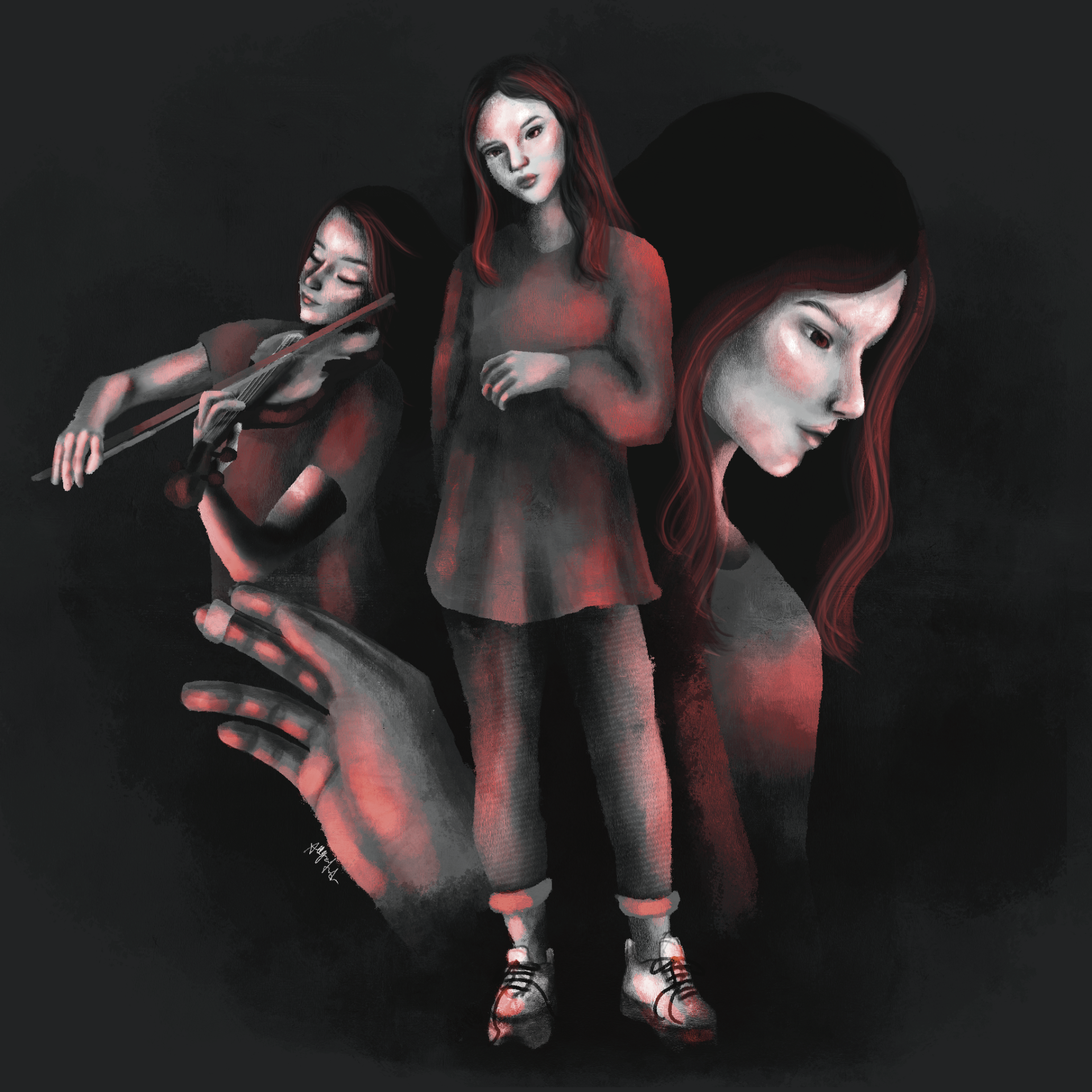
Jena Lin
illustrated by Allegra Thadea
#Jena Lin from ‘A Lonely Girl is a Dangerous Thing’ by Jessie Tu (Allen and Unwin)
Erin Mason: Secretary
CW: Sexually explicit scenes, self-harm, alcohol and drug use, fatphobia, racism, sexism, violence
“I want attention and I want it all the time. The urge feels like a hunger I can’t contain, an illness without remedy.”
Jena is a lonely person, emotionally detached and focused on filling that void through fulfilling her sexual desires. As a child violin prodigy, her talent becomes a source of joy and pain. We see Jena lapse through intense and excruciating periods of practicing her violin, neglecting her own needs, and isolating herself from everyone. The violin becomes Jena’s outlet for expressing her creativity and an immense burden that drains her life. Intertwined with this struggle is Jena’s experience with racism and sexual abuse, which work to dehumanise her and make her question her identity outside of these experiences. In so many of these experiences, especially with her toxic relationships and sexual activities, we see her continue to lose control but operate under a guise of calm and perfection. It is a twisted paradox to have a character who, though independent and autonomous, makes her own choices controlled by her fear and tendency to be self-destructive.
#Jess Brightwell from ‘Ink and Bone’ by Rachel Caine (Penguin)
Melissa Lee: Content Creator
CW: Violence, war
“You have ink in your blood, boy, and no help for it.”
The heir to a family trade of book smuggling is tasked to infiltrate the Great Library, where he must pretend to protect ancient texts and manuscripts. Sounds like the beginning to a great heist story, right? It’s so much deeper. Unlike his father, who sees books as a mere part of the business deal, Jess has a deep interest, care, and respect for the books he is tasked to smuggle. This philosophical contradiction is one of the reasons why it’s so easy for him to find a more desirable life purpose with people of similar mindsets. Jess’ character is extremely entertaining and crafty, someone who considers personal, social, and political aspects before making decisions. Of course, this means his father’s authority gives him reason to lapse back into the familiarity of his family trade. He can use his position in the Library to benefit his family...and sometimes use his family to benefit the Library. For him, autonomy doesn’t mean a complete rejection of the past which used to be your whole world — it’s about embracing what the past has given you to face the present.

 -
-